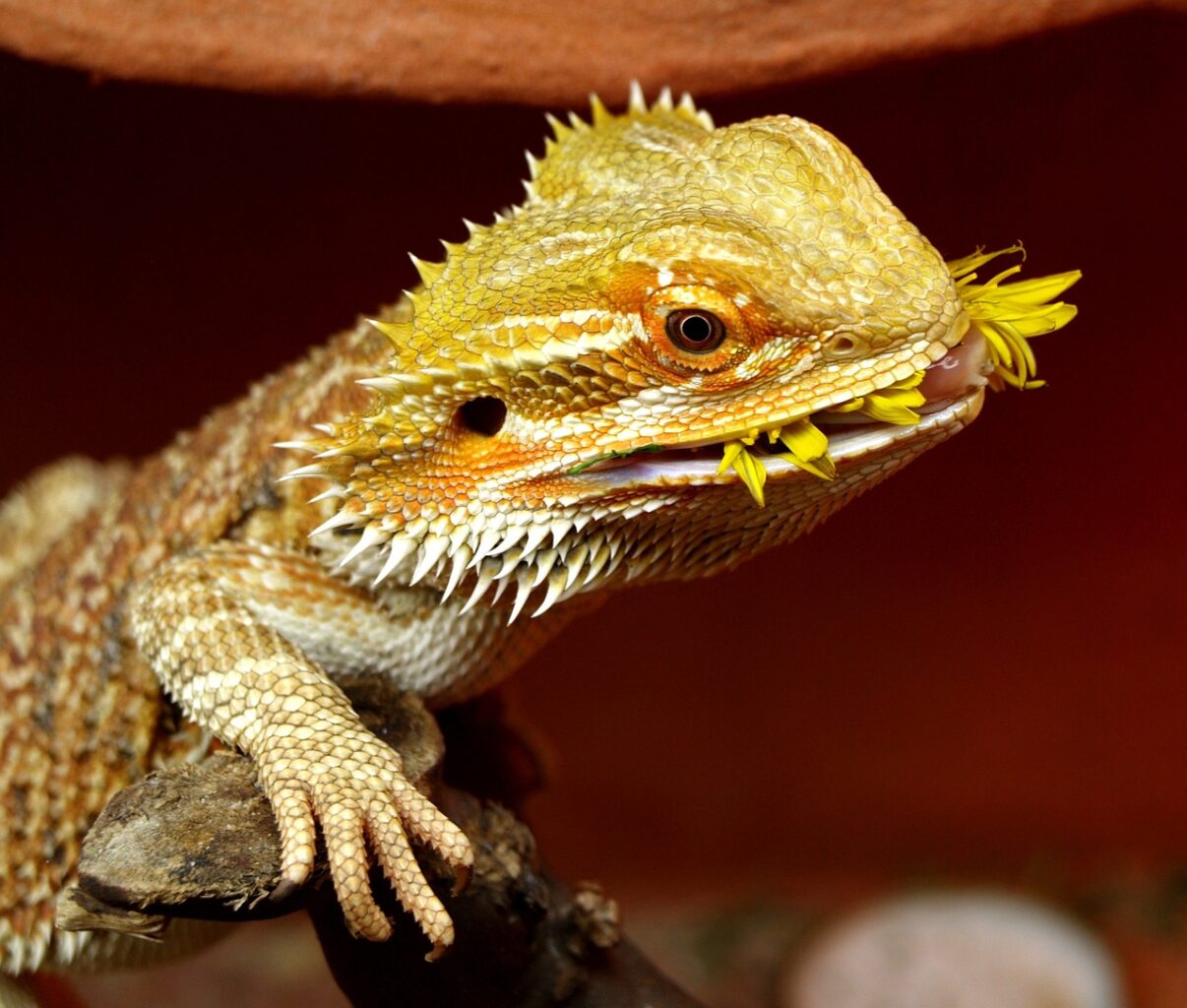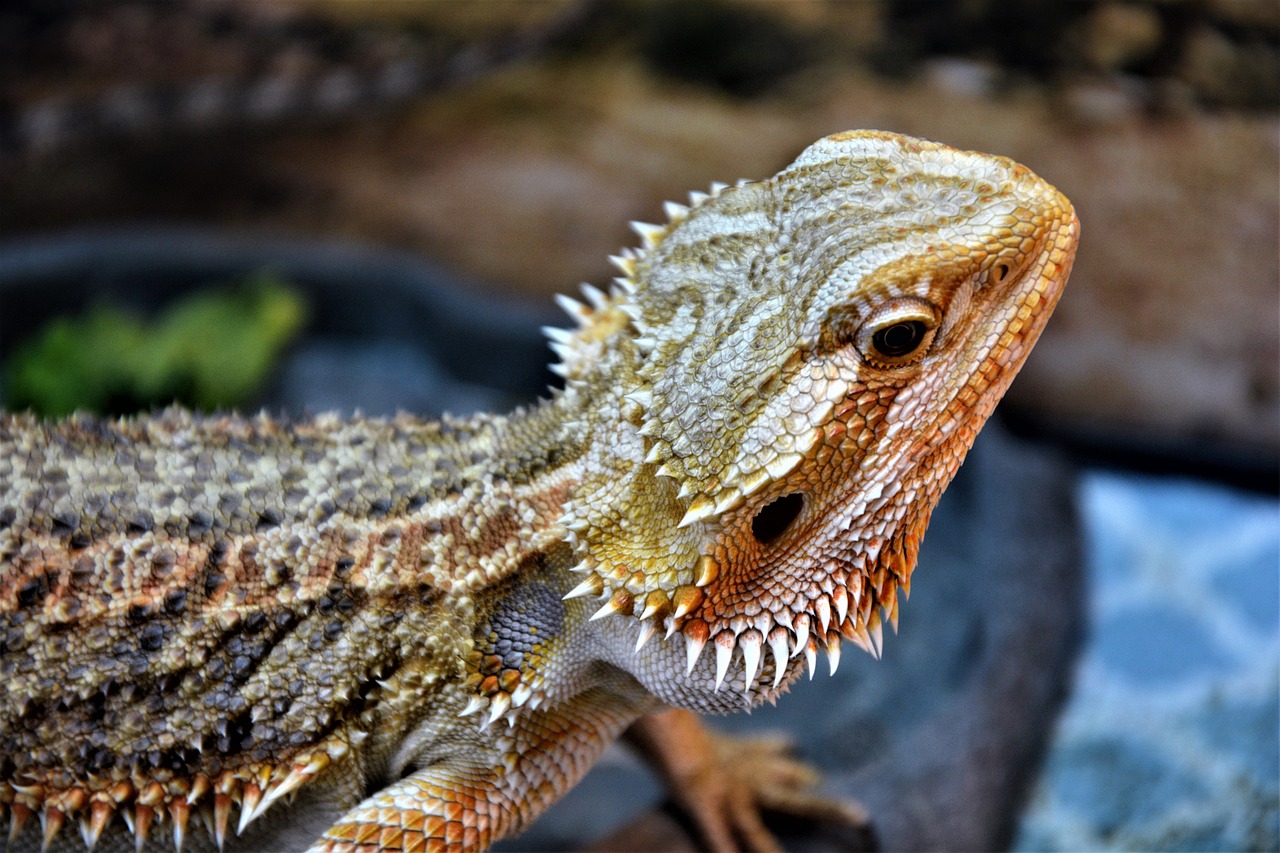Bearded dragons (Pogona vitticeps) are fascinating reptiles that have captured the hearts of many reptile enthusiasts. Their unique appearance and charming personalities make them popular pets for both beginners and experienced reptile keepers.
One intriguing feature that sets them apart from other reptiles is the presence of a “bearded dragon third eye,” also known as the parietal eye. In this article, we will delve into the world of bearded dragons and explore the mysteries and functionalities of their third eye.
You may also want to know if bearded dragons are good pets?
Understanding the Bearded Dragon
What is a Bearded Dragon?
Bearded dragons are medium-sized lizards native to the arid regions of Australia. They belong to the reptilian order Squamata and the family Agamidae. These diurnal lizards are named for their unique defensive behavior, where they puff out the skin under their throat, resembling a beard, to intimidate potential threats.

Physical Characteristics
Bearded dragons have a distinctive appearance, characterized by their flattened bodies, triangular-shaped heads, and spiny scales on the throat, which form the “beard.” They come in various colors and patterns, providing a captivating array for reptile enthusiasts.
Natural Behaviors
In the wild, bearded dragons exhibit various natural behaviors. They are known for basking on rocks to absorb heat, burrowing to escape extreme temperatures, and engaging in head bobbing displays as a form of communication.
The Third Eye
The Parietal Eye
The “third eye” of bearded dragons is formally known as the parietal eye, pineal eye, or pineal gland. This unique feature is a small, photosensitive organ located on the top of their heads. It is positioned between the two regular eyes, making it easy to miss at first glance.
Location and Appearance
The parietal eye appears as a pale, translucent spot on the head of bearded dragons. It is often described as a “scale” or “dot” that differs slightly in color and texture from the surrounding scales.
Functions and Purpose
The parietal eye serves various essential functions for bearded dragons. It is primarily involved in detecting changes in light and shadow, which helps them identify potential predators and remain vigilant in their environment.
Unique Traits
Advantages of the Third Eye
The parietal eye gives bearded dragons an edge in survival. It allows them to perceive threats from above, such as aerial predators like birds of prey, helping them take evasive action to avoid being caught.
Limitations and Vulnerabilities
While the third eye is advantageous, it has some limitations. Its sensitivity to light makes bearded dragons more susceptible to stress when exposed to excessively bright or artificial lighting.

Importance of the Bearded Dragon Third Eye
Role in Survival and Adaptation
The parietal eye is an essential adaptation that has aided bearded dragons in their survival for millions of years. It contributes to their ability to thrive in their natural habitat.
Implications for Captive Care
Understanding the significance of the parietal eye is crucial for providing optimal care to captive bearded dragons. Proper lighting and environmental enrichment play a vital role in maintaining their well-being.
Bearded Dragon Third Eye: The Science Behind It
Comparative Anatomy
The presence of the parietal eye is not exclusive to bearded dragons; it is found in many other reptiles and even some fish. This organ has evolved over time to fulfill specific roles in various species.
Photoreception Mechanisms
The parietal eye is capable of photoreception, meaning it can sense changes in light intensity. This photoreception is distinct from the image-forming vision of the regular eyes.
Misconceptions and Myths
Dispelling Common Misunderstandings
There are several myths and misconceptions surrounding the third eye of bearded dragons. Addressing these misunderstandings can help reptile keepers provide better care for their pets.
Caring for Bearded Dragons
Creating an Optimal Environment
To ensure the health and well-being of bearded dragons, it is crucial to set up a suitable habitat that mimics their natural environment. This includes providing appropriate lighting, heating, and substrate.
Maintaining Proper Health
Regular health check-ups by a qualified reptile veterinarian are essential to detect and address any health issues promptly. A well-balanced diet and proper hydration are also crucial for their overall health.
Handling and Socialization
Bearded dragons can become accustomed to gentle handling and interaction with their owners. However, it is essential to understand their body language and avoid stressful situations.
Conclusion
In conclusion, the parietal eye, or third eye, of bearded dragons is an intriguing feature that plays a significant role in their survival and adaptation. Understanding its functionalities and limitations can help reptile enthusiasts provide the best care for their beloved pets. By creating a suitable environment and promoting their overall well-being, we can ensure that these charming reptiles thrive in captivity.
FAQs – Bearded Dragon Third Eye
- What is the parietal eye in bearded dragons, and where is it located? The parietal eye, also known as the third eye or pineal gland, is a small, photosensitive organ located on the top of a bearded dragon’s head, between its regular eyes.
- What is the purpose of the third eye in bearded dragons? The third eye serves as a photoreceptive organ, helping bearded dragons detect changes in light and shadow. It aids in identifying potential predators, contributing to their survival in the wild.
- Do all bearded dragons have a third eye? Yes, all bearded dragons possess a parietal eye. It is a natural feature found in most reptiles and even some fish.
- What advantages does the third eye provide to bearded dragons? The third eye allows bearded dragons to detect threats from above, such as aerial predators. This ability helps them take evasive action and avoid potential dangers.
- Can the third eye be seen with the naked eye? Yes, the third eye is visible as a pale, translucent spot on the top of a bearded dragon’s head. It may appear as a small scale or dot that is slightly different in color and texture from the surrounding scales.
- Does the third eye have any limitations or vulnerabilities? While advantageous, the third eye’s sensitivity to light can make bearded dragons susceptible to stress when exposed to excessive brightness or artificial lighting.
- Is the third eye present in other reptiles? Yes, the parietal eye is found in many other reptile species and some fish. It has evolved over time to fulfill specific functions in different organisms.
- How can I provide proper care for my bearded dragon’s third eye? To care for a bearded dragon’s third eye, ensure it has access to proper lighting and a suitable environment that mimics its natural habitat. Avoid exposing it to overly bright or artificial lighting to prevent stress.
- Are there any myths or misconceptions surrounding the third eye of bearded dragons? Yes, there are common myths and misconceptions about the third eye. It is essential to understand the facts to provide the best care for these reptiles.
- How can I maintain the overall health and well-being of my bearded dragon? Regular health check-ups with a qualified reptile veterinarian, a well-balanced diet, proper hydration, and gentle handling are essential for a bearded dragon’s health and happiness.